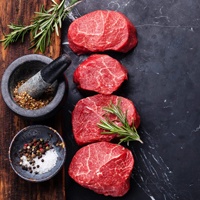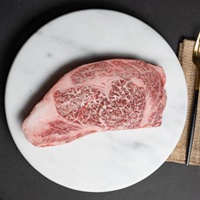Wet Vs. Dry-Aged Meat
Meat The Butchers proudly ensures fresh, high quality meats every time. A part of being able to fulfill this guarantee is our process for wet-aging meat to achieve optimal tenderness. All of our steaks and cuts of meat are handled with a level of expertise that you just won’t find from other online sources.

For a piece of meat to be wet-aged, we seal it in packaging shortly after cutting it to lock in freshness. It then must be refrigerated for a certain period of time so that the meat’s natural enzymes will break down the muscle tissue, tenderizing it for consumption.
As a rule of thumb:
● Wet-aged beef needs to be refrigerated for 3 weeks
● Wet-aged pork and lamb needs to be refrigerated for 1 week
● Wet-aged chicken needs to be refrigerated for a few days
The dry-aged process involves dehydrating the meat that is hung in open air in very cold temperatures. Muscle and fat is broken down, but quite a bit of the meat is lost as well. This makes the cost of dry-aged beef more expensive than wet-aged beef, and less often purchased and consumed. In retail stores, unless the beef is specifically labeled as dry-aged, it most likely has been wet-aged.
It really comes down to preference when deciding between wet and dry-aged beef. There is a bit of a flavor difference. Dry-aged can be described as having a roasted flavor and wet-aged lacks the same depth of flavor. But at the same time, because most people are more familiar with the flavor and texture of wet-aged beef, dry-aged beef may not be so desirable.
Choosing Wet-Aged Meat
Wet-aged beef can be prepared and cooked in all ways you might like – in the oven, on the grill, in a stew, with pasta, you name it. Our wet-aged process ensures your steak or chop will be juicy and tender and ready to enjoy right when you receive it.
At Meat The Butchers, we wet-age our beef until it is to our standards for your consumption. Please visit our online store to browse our selection of prime beef, all of which are artisanally cut by our craftsmen.



















